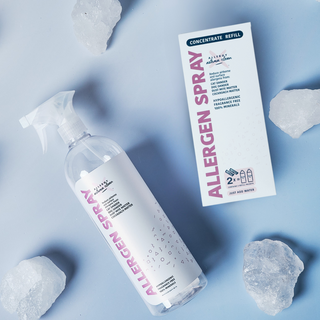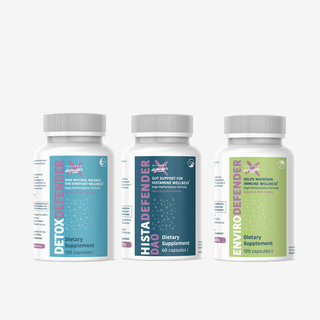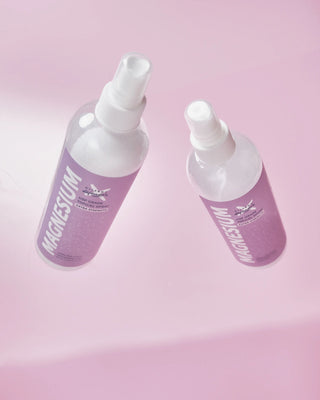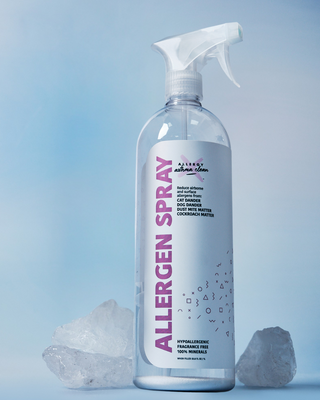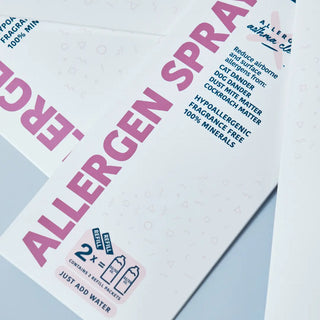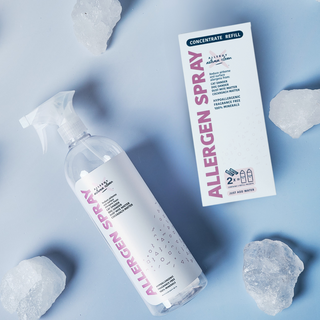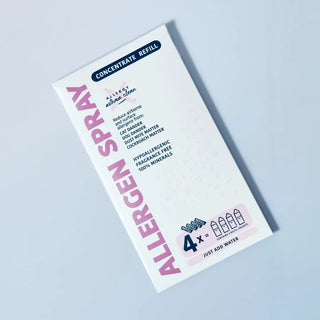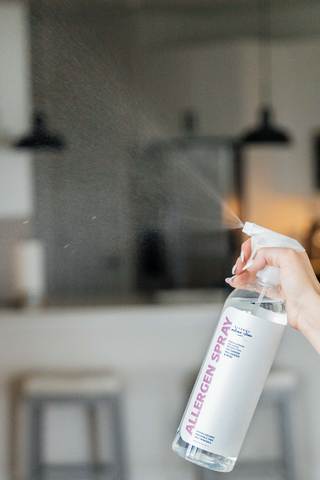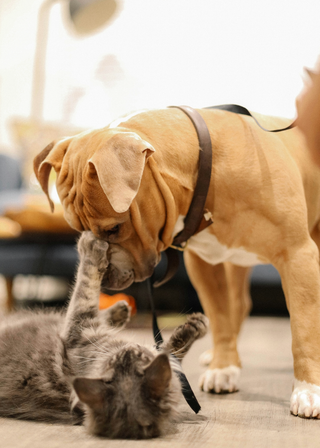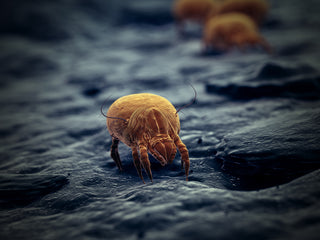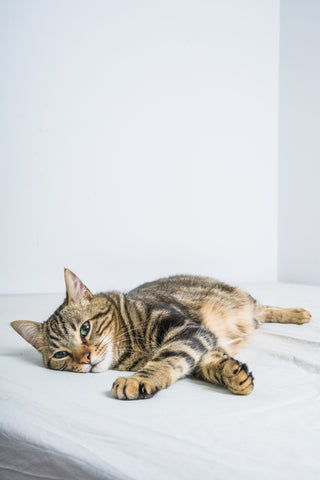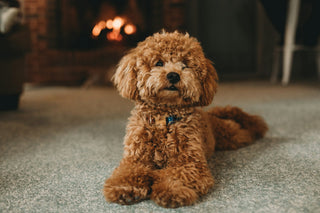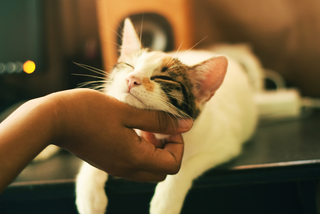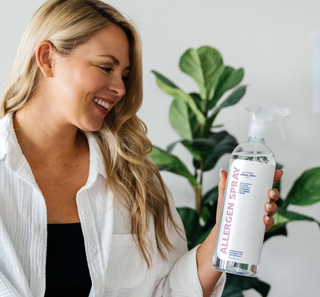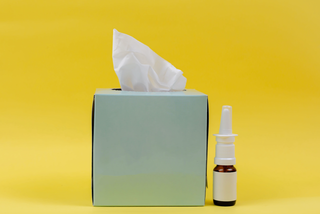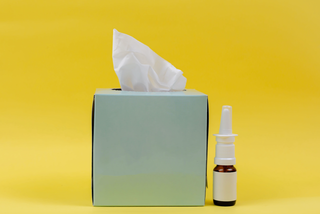What are the Worst Cats for Allergies? The Answer Might Surprise You!
You love cats. The more exotic, the better! The problem is you're allergic to them. So, how do you have a kitty with the least trouble for you? This guide will help you identify the worst cats for allergies, explore more suitable felines, and get some ideas on how to minimize your reactions to them.
While no cat is entirely allergen-free, some breeds are said to produce significantly more allergens than others. But before diving into specific breeds, let's understand what makes you allergic to cats in the first place.
Understanding Cat Allergies
Did you know that cat allergies are primarily triggered by a protein called Fel d 1, (one of 8 different proteins found in cat allergies). Fel d 1 is present in:
- Cat saliva
- Skin cells (dander)
- Urine
- Sebaceous gland secretions
Cats groom themselves and spread this protein throughout their coat and surrounding environment. So, if you have a cat, you cannot do much to prevent allergens, but you can make better choices about which cat to fall in love with.
Factors That Increase Allergen Production, Thus Making These Breeds the Worst Cats for Allergies
Several characteristics make particular cats more problematic for allergy sufferers. Face it their coats are one of the reasons we desire them so much- they are really beautiful animals with long, silky fur! But, if you're allergic, beware.
High-Shedding Coats
Cats with the following coat types typically produce more allergens which spell trouble for you:
- Double coats
- Long fur
- Thick undercoats
- Heavy seasonal shedding patterns
Grooming Requirements
Some breeds require daily grooming, especially those with long hair. These breeds can be problematic because:
- More grooming means more saliva on the coat
- Increased handling of the feline's coat spreads dander
- All of the above means greater potential for spreading allergens around
Here's the list of the Worst Cats for Allergies (and Some Happen to be The Most Beautiful!)
1. Persian Cats
Persian cats are long-haired felines. They are downright beautiful kitties with flat, round faces. They hail from Persia and Iran from hundreds of years ago. They are friendly, gentle cats (no pouncing on you to bite at the last minute!). They come in blue, white, cream, chocolate and more colors.
It's easy to see why Persian felines are desirable. We hate to break it to you, but Persian cats top our list of worst cats for allergies for several reasons:
- Their long, thick, double-coat traps dander and that means more allergies for you
- They require extensive grooming (daily!), which means you'll be loaded with allergens once you're done grooming
- They shed heavily throughout the year (not just twice a year in Fall and Spring)
- They have a higher-than-average Fel d 1 production
2. Maine Coon
Maine Coon cats are bigger than most other felines. They have a friendly personality and have been known to curl up to you if in the mood. They are called Maine Coon because they are actually from the state of Maine. They also have long hair.
If you favor dogs a bit and think a Maine Coon might fit the bill (they do have lovable personalities) consider that Maine Coons are also on the list of the worst cats for allergies:
- Their immense size means more surface area for allergen production
- Their dense, long fur sheds extensively
- They require regular grooming, which spreads allergens
- They have a heavy seasonal shedding pattern, not just Spring and Fall
3. Himalayan Cats
People fall in love with the Himalayan because of their cute button noses and bright eyes. Their round face also adds to their very distinctive look. Their silky fur is long and feels just like a stuffed animal you grew up with, only better! They have sweet personalities. No wonder people are attracted to this beautiful feline!
Sadly, these beautiful cats are problematic because:
- Similar to Persians with long, thick coats (Himalayans are part Persian, part Siamese)
- They have high-maintenance grooming needs because their fur can mat easily, so you want to groom this cat daily
- Lots of dander production
- They are regular shedders throughout the year
4. British Shorthair
Just like the Maine Coon, the British Shorthair is from Britain. They are known as the teddy bear of cats because of their round faces and short coats. The breed is mostly blue in color, but they come in other colors. They, too, have a friendly personality.
Don't let the shorter coat fool you! They, indeed, are on the list of worst cats for allergies.
- Their dense double coat traps allergens
- They are heavy seasonal shedders
- They also produce significant amounts of dander
- Their thick undercoat requires weekly grooming
Better Alternative Cat Breeds if You're Not Buying into The Worst Cats for Allergies
Well, we hope you aren't too discouraged about owning a beautiful breed of cat. While no cat is entirely hypoallergenic, some breeds are thought to produce fewer allergens. Have you considered these breeds?
- Sphynx (hairless cats that are playful. Their skin requires bathing.)
- Siberian (despite their long fur, it's been proposed they produce less Fel d 1)
- Balinese (looks like a Siamese cat with long hair. Very vocal)
- Bengal (beautiful coat. Check out an article about this kitty, here)
How to Manage Cat Allergies
If you're bound and determined to have a cat (they are more comfortable at home for extended periods of time than dogs), how do you manage your cat allergies?
Here's Help in Controlling Cat Allergies in Your Home
- Use HEPA air purifiers, especially in your bedroom and living room
- Use Allergen Spray (3rd party lab verified to control cat allergens by up to 99%. This stuff works!*)
- Vacuum weekly and clean your floors and surfaces weekly
- Keep your cat out of the bedroom (we know this might be hard to do!)
- Wash your hands every time after handling your cat
If You Can't Seem to Get a Handle on Your Cat Allergies and Giving Up Your Kitty is Not an Option
So you've used over-the-counter meds, but they aren't working the best; you might need some additional help, aka the medical route:
- Consult with an allergist
- Consider all options, including shots, prescribed meds, and immunotherapy
- Use prescribed allergy medications as directed
The Worst Cats for Allergies Conclusion
When dealing with cat allergies, choosing the right breed can make a significant difference in your quality of life. While Persian, Maine Coon, Himalayan, and British Shorthair cats are among the worst cats for allergies, understanding why these breeds are problematic can help.
- Remember that individual reactions may vary, so what might be someone's worst allergy nightmare might not be yours.
- Regardless of breed, spending time with a specific cat before adoption is always recommended. Talk to a breeder or visit a shelter.
- If need be, consider working with an allergist to develop a management plan that allows you to enjoy your kitty fully.
* Allergen Spray works! People love it. It's highly rated. Buy a bottle today. Allergen Spray

